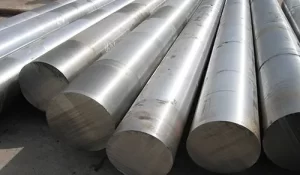Corrosion resistance is a critical factor when selecting materials for various applications. Among stainless steel grades, 316 stainless steel is renowned for its exceptional resistance to corrosion. In this comprehensive guide, we will explore how the corrosion resistance of 316 stainless steel round bars compares to other stainless steel grades, shedding light on why it’s a top choice in industries where corrosion is a major concern.
Understanding 316 Stainless Steel
Before diving into the comparison, let’s establish a clear understanding of what 316 stainless steel is.
What is 316 Stainless Steel?
316 stainless steel, often referred to as marine-grade stainless steel, is a type of austenitic stainless steel. It contains a precise blend of elements, primarily chromium, nickel, and molybdenum, which imparts remarkable corrosion resistance properties. This composition makes 316 stainless steel suitable for a wide range of applications, especially in environments where corrosion is a significant challenge.
The Corrosion Resistance of 316 Stainless Steel
Now, let’s delve into the key properties that make 316 stainless steel highly corrosion-resistant.
Unrivaled Corrosion Resistance
316 Stainless Steel: The Gold Standard in Corrosion Resistance
316 stainless steel is renowned for its unmatched corrosion resistance. It can withstand exposure to a wide array of corrosive substances, making it ideal for applications in harsh environments. Whether it’s contact with saltwater, acids, chemicals, or high humidity, 316 stainless steel remains steadfast in its resistance to corrosion.
Comparing with 304 Stainless Steel
304 vs. 316: A Corrosion Resistance Battle
When comparing stainless steel grades, 316 often stands out due to its superior corrosion resistance, especially in chloride-rich environments. While both 304 and 316 stainless steel are popular choices, the latter’s addition of molybdenum gives it the edge in resisting pitting and crevice corrosion. This makes 316 stainless steel the preferred option for marine applications and industrial settings where chloride exposure is common.
Alloying Elements and Their Impact
The Role of Chromium, Nickel, and Molybdenum
The corrosion resistance of 316 stainless steel can be attributed to its alloying elements:
- Chromium: Forms a protective oxide layer on the surface, preventing further oxidation and corrosion.
- Nickel: Enhances resistance to acids and alkaline solutions.
- Molybdenum: Provides added protection against chloride-induced corrosion.
Together, these elements create a formidable barrier against corrosion, even in aggressive environments.
Comparing 316 Stainless Steel with Other Stainless Steel Grades
To provide a comprehensive view, let’s compare the corrosion resistance of 316 stainless steel with some other commonly used stainless steel grades.
316 vs. 304 Stainless Steel
A Widely Debated Matchup: 316 vs. 304
As mentioned earlier, 316 stainless steel outperforms 304 stainless steel in terms of corrosion resistance. While 304 is an excellent general-purpose stainless steel, it may not fare as well in corrosive atmospheres. If your application demands a higher resistance to corrosion, 316 is the superior choice.
316 vs. 316L Stainless Steel
The Low-Carbon Advantage: 316L
316L stainless steel is a low-carbon variant of 316, primarily used in applications where welding is involved. While it maintains much of the corrosion resistance of 316, the lower carbon content minimizes the risk of sensitization, which can lead to corrosion in certain conditions. For weld-heavy projects, 316L may be preferred to maintain the highest level of corrosion resistance.
316 vs. Duplex Stainless Steels
Duplex Stainless Steels: A Strong Contender
Duplex stainless steels are known for their excellent corrosion resistance and strength. They contain a balanced mix of austenite and ferrite phases, offering a unique combination of properties. In some highly corrosive environments, duplex stainless steels may outperform 316. However, the choice between 316 and duplex stainless steel depends on specific application requirements and cost considerations.
316 vs. 317 Stainless Steel
Specialized Corrosion Resistance: 317
Stainless steel grade 317 is an austenitic stainless steel similar to 316 but with higher molybdenum content. This higher molybdenum content provides enhanced resistance to certain corrosive substances, particularly sulfuric acid. If your application involves exposure to sulfuric acid or similar chemicals, 317 stainless steel may be a better choice than 316.
FAQ: Frequently Asked Questions
Is 316 stainless steel completely corrosion-proof?
While 316 stainless steel exhibits exceptional corrosion resistance, it is not completely corrosion-proof. In extremely harsh conditions or with prolonged exposure to aggressive chemicals, some corrosion may occur. Regular maintenance and proper material selection can mitigate this risk.
Can 316 stainless steel rust?
Under typical conditions, 316 stainless steel resists rust and corrosion. However, in highly aggressive environments or if the protective oxide layer is compromised, rusting may occur. Proper care and maintenance, including routine cleaning and passivation, can help prevent rust.
How does 316 stainless steel compare to 316L in terms of corrosion resistance?
Both 316 and 316L stainless steel offer excellent corrosion resistance. The primary difference lies in sensitization, which can affect corrosion resistance. 316L, with its lower carbon content, is less prone to sensitization, making it a better choice for welding applications where maintaining corrosion resistance is critical.
Is 316 stainless steel suitable for saltwater environments?
Yes, 316 stainless steel is highly suitable for saltwater environments. It is a preferred choice for marine applications, including boat fittings, coastal structures, and offshore equipment, where exposure to saltwater and chloride is common.
Are there alternative materials that offer better corrosion resistance than 316 stainless steel?
In specific applications, materials like super duplex stainless steels and high-nickel alloys may offer even higher corrosion resistance than 316 stainless steel. However, the choice of material depends on the specific environmental conditions and project requirements. Consulting with a materials engineer is advisable for critical applications.
Conclusion
In the world of stainless steel, 316 stainless steel round bars emerge as champions of corrosion resistance. Their ability to withstand the harshest environments, coupled with a well-balanced composition of alloying elements, makes them the go-to choice for countless industries. When comparing corrosion resistance among stainless steel grades, 316 consistently stands out as a reliable and durable option, offering peace of mind in applications where corrosion is a constant adversary.


